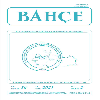HASAT ÖNCESİ 24–EPİBRASSİNOLİD (24–eBL) UYGULAMALARININ ALPHONSE LAVALLÉE VE HOROZ KARASI ÜZÜM ÇEŞİTLERİNDE ALFA, BETA, GAMA, DELTA TOKOFEROL BİRİKİMLERİ ÜZERİNE ETKİLERİ
THE EFFECTS OF PREHARVEST 24–EPIBRASSINOLID (24–eBL) APPLICATIONS ON THE ACCUMULATION OF ALPHA, BETA, GAMMA, DELTA TOCOPHEROLS IN ALPHONSE LAVALLÉE AND HOROZ KARASI GRAPE CULTIVARS
___
- Bajguz, A. and S. Hayat, 2009. Effects of brassinosteroids on the plant responses to environmental stresses. Plant Physiology and Biochemistry. 47(1):1–8.
- Biesaga–Koscielniak, J., Dziurka, M., Ostrowska, A., Mirek, M., Koscielniak, J. and A. Janeczko, 2014. Brassinosteroid Improves Content of Antioxidants in Seeds of Selected Leguminous Plants. Australian Journal of Crop Science. 8(3):378–388.
- Choudhury, D., Das, A., Bhattacharya, A., and G. Chakrabarti, 2010. Aqueous Extract of Ginger Shows Antiproliferative Activity through Disruption of Microtubule Network of Cancer Cells. Food and Chemical Toxicology, 48(10):2872–2880.
- Clouse, S.D. and J.M. Sasse, 1998. Brassinosteroids: Essential Regulators of Plant Growth and Development. Annual Review of Plant Physiology and Plant Molecular Biology, 49:427–451.
- De Camargo, A.C., Regitano–D’Arce, M. A.B., Biasoto, A.C.T. and F. Shahidi, 2014. Low Molecular Weight Phenolics of Grape Juice and Winemaking Byproducts: Antioxidant Activities and Inhibition of Oxidation of Human Low–Density Lipoprotein Cholesterol and DNA Strand Breakage. Journal of Agricultural and Food Chemistry. 62(50):12159–12171.
- Farooq, M., A. Wahid and S.M.A. Basra, 2009. Improving Water Relations and Gas Exchange with Brassinosteroids in Rice under Drought Stress. Journal of Agronomy and Crop Science. 195(4):262–269.
- Farooq, M., Wahid, A., Lee, D.J., Cheema, S.A. and T. Aziz, 2010. Drought Stress: Comparative Time Course Action of the Foliar Applied Glycinebetaine, Salicylic Acid, Nitrous Oxide, Brassinosteroids and Spermine in Improving Drought Resistance of Rice. Journal of Agronomy and Crop Science 196(5):336–345.
- Göktürk Baydar, N., 2006. Organic Acids, Tocopherols and Phenolic Compositions of Some Turkish Grape Cultivars. Chemistry of Natural Compounds. 42(2):156–159.
- Göktürk Baydar, N. and M. Akkurt, 2001. Oil Content and Oil Quality Properties of Some Grape Seeds. Turkish Journal of Agricultural and Forestry. 25:163–168.
- Göktürk Baydar, N. and G. Özkan, 2006. Tocopherol Contents of Some Turkish Wine By–Products. European Food Research and Technology 223(2):290–293.
- Hayat, S., Yadav, S., Ali, B. and A. Ahmad, 2010. Interactive Effect of Nitric Oxide and Brassinosteroids on Photosynthesis and the Antioxidant System of Lycopersicon Esculentum. Russian Journal of Plant Physiology. 57(2):212–221.
- Janeczko, A., J. Biesaga–Kościelniak, and M. Dziurka, 2009. 24–Epibrassinolide Modifies Seed Composition in Soybean, Oilseed Rape and Wheat. Seed Science and Technology. 37(3):625–639.
- Kamal Eldin, A. and L.A. Appelqvist, 1996. The Chemistry and Antioxidant Properties of Tocopherols and Tocotrienols. Lipids. 31:671–701.
- Khripach, V.A., V.N. Zhabinski and N.B. Khripach, 2003. New Practical Aspects of Brassinosteroids and Results of Their Ten Year Agricultural Use in Russia and Belarus. In Brassinosteroids: Bioactivity and crop productivity. Editors: Hayat, S., Ahmad, A. Netherlands: Springer.
- Khripach, V., V. Zhabinskii and A.D. Groot, 2000. Twenty Years of Brassinosteroids: Steroidal Plant Hormones Warrant Better Crops for the 21. Century. Annals of Botany 86(3):441–447.
- Kushi, L.H., Folsom, A.R., Prineas, R.J., Mink, P.J., Wu, Y. and R.M. Bostick, 1996. Dietary Antioxidant Vitamins and Death from Coronary Heart Disease in Postmenopausal Women. The New England J. of Medicine 334:1156–1162.
- Malikova, J., J. Swaczynova, Z. Kolar and M. Strnad, 2008. Anticancer and Antiproliferative Activity of Natural Brassinosteroids. Phytochemistry 69(2): 418–426.
- Nemhauser, J.L. and J. Chory, 2004. BRing it on: New Insights into the Mechanism of Brassinosteroid Action. Journal of Experimental Botany. 55(395):265–270.
- Raghu, K. and S. Seeta Ram Rao, 2016. Effect of Brassinosteroids on Antioxidants Content and Radical Scavenging Activity of Tinospora cordifolia (Willd.) Miers ex Hook. F & Thoms. Journal of Medicinal Plants Studies. 4(5):117–121.
- Sun, S., Kadouh, H.C., Zhu, W. and K. Zhou, 2016. Bioactivity–Guided Isolation and Purification of A–Glucosidase Inhibitor, 6–O–D–glycosides, from Tinta Cão Grape Pomace. Journal of Functional Foods. 23:573–579.
- Szarka, A., B. Tomasskovics and G. Bánhegyi, 2012. The Ascorbate– glutathione–α–tocopherol Triad in Abiotic Stress Response. International Journal of Molecular Sciences. 13(4):4458–4483.
- Xia, X.J., Huang, Y.Y., Wang, L., Huang, L.F., Yu, Y.L., Zhou, Y.H. and J.Q. Yu, 2006. Pesticides induced depression of photosynthesis was alleviated by 24– epibrassinolide pretreatment in Cucumis sativus L. Pesticide Biochemistry and Physiology. 86:42–48.
- ISSN: 1300-8943
- Yayın Aralığı: Yılda 2 Sayı
- Başlangıç: 1968
- Yayıncı: Atatürk Bahçe Kültürleri Merkez Araştırma Enstitüsü
MARDİN İLİNDE YETİŞTİRİLEN ÜZÜM ÇEŞİTLERİNİN VERİM ÖZELLİKLERİNİN BELİRLENMESİ
Dilek Değirmenci KARATAŞ, Savaş TANRISEVER, Hüseyin KARATAŞ
TÜRKİYE’DE ŞARAPLIK ÜZÜM YETİŞTİRİCİLİĞİNİN GELİŞMEMESİNİN BAŞLICA NEDENLERİ VE ÇÖZÜM ÖNERİLERİ
Elman BAHAR, İlknur KORKUTAL, Tezcan ALÇO, Serkan CANDAR
TRAKYA BÖLGESİ’NDE BAĞ ALANLARINDA YAYGIN BULUNAN NEMATOD TÜRÜ Mesocriconema xenoplax RASKİ, 1952
İbrahim Halil ELEKÇİOĞLU, Gürkan Güvenç AVCI, Tohid BEHMAND, Lerzan ÖZTÜRK
NARİNCE ÜZÜM ÇEŞİDİNDE VERİM VE ŞIRA KOMPOSİZYONU ÜZERİNE SALKIM SEYRELTMENİN ETKİLERİ
MEVLANA ÜZÜM ÇEŞİDİ KLON ADAYLARININ GÖZ VERİMLİLİK DEĞERLERİ
KARADENİZ BÖLGESİNDEN SELEKTE EDİLEREK TESCİLLENEN YENİ KOKULU ÜZÜM (Vitis labrusca L.) ÇEŞİT
Bülent KÖSE, Seda ATEŞ, Hüseyin ÇELİK
Ahmet ALTINDİŞLİ, Akay ÜNAL, Turcan TEKER
DİYARBAKIR İLİ ASMA GEN POTANSİYELİ
TOPRAKTAN ŞARABA, BORNOVA MİSKETİNİN ÖZELLİKLERİNİN BELİRLENMESİ
Selin Yabacı KARAOĞLAN, Turgut CABAROĞLU
EKŞİ KARA VE NARİNCE ÜZÜM (Vitis vinifera L.) ÇEŞİTLERİNDE ANTER KÜLTÜRÜ
